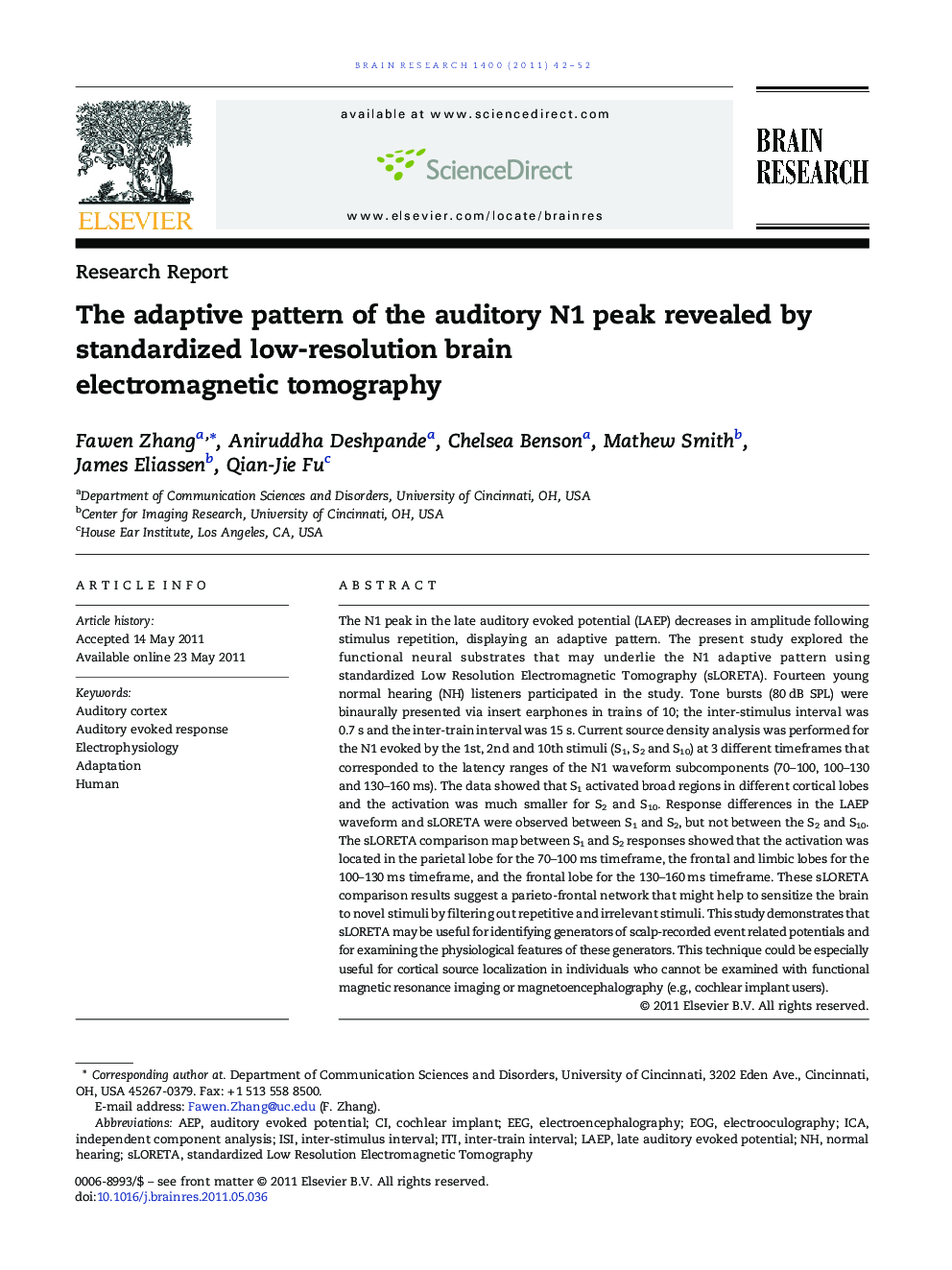| کد مقاله | کد نشریه | سال انتشار | مقاله انگلیسی | نسخه تمام متن |
|---|---|---|---|---|
| 4325794 | 1614039 | 2011 | 11 صفحه PDF | دانلود رایگان |

The N1 peak in the late auditory evoked potential (LAEP) decreases in amplitude following stimulus repetition, displaying an adaptive pattern. The present study explored the functional neural substrates that may underlie the N1 adaptive pattern using standardized Low Resolution Electromagnetic Tomography (sLORETA). Fourteen young normal hearing (NH) listeners participated in the study. Tone bursts (80 dB SPL) were binaurally presented via insert earphones in trains of 10; the inter-stimulus interval was 0.7 s and the inter-train interval was 15 s. Current source density analysis was performed for the N1 evoked by the 1st, 2nd and 10th stimuli (S1, S2 and S10) at 3 different timeframes that corresponded to the latency ranges of the N1 waveform subcomponents (70–100, 100–130 and 130–160 ms). The data showed that S1 activated broad regions in different cortical lobes and the activation was much smaller for S2 and S10. Response differences in the LAEP waveform and sLORETA were observed between S1 and S2, but not between the S2 and S10. The sLORETA comparison map between S1 and S2 responses showed that the activation was located in the parietal lobe for the 70–100 ms timeframe, the frontal and limbic lobes for the 100–130 ms timeframe, and the frontal lobe for the 130–160 ms timeframe. These sLORETA comparison results suggest a parieto-frontal network that might help to sensitize the brain to novel stimuli by filtering out repetitive and irrelevant stimuli. This study demonstrates that sLORETA may be useful for identifying generators of scalp-recorded event related potentials and for examining the physiological features of these generators. This technique could be especially useful for cortical source localization in individuals who cannot be examined with functional magnetic resonance imaging or magnetoencephalography (e.g., cochlear implant users).
Research highlights
► Multiple brain regions contribute to the N1 of the late auditory evoked potential.
► The N1 displays amplitude adaptation following stimulus repetition.
► There is a parieto-frontal brain network involved in N1 adaptation.
Journal: Brain Research - Volume 1400, 11 July 2011, Pages 42–52